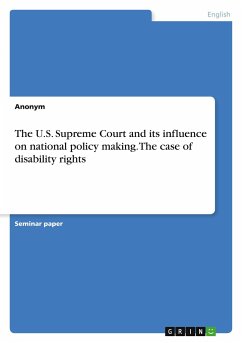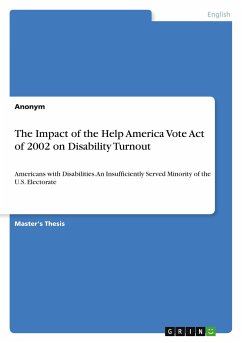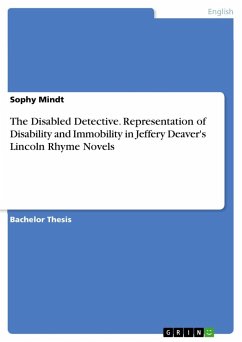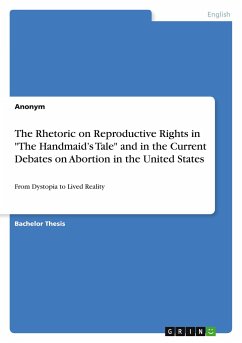Seminar paper from the year 2015 in the subject American Studies - Miscellaneous, grade: 1,4, Free University of Berlin, language: English, abstract: This paper explores the role of the U.S. Supreme Court in national policy-making, particularly focusing on disability rights as shaped by the Americans with Disabilities Act of 1990. It analyzes the Court's influence through the lens of the policy cycle, emphasizing the stages of agenda-setting and policy implementation. The paper concludes that the Supreme Court has significantly impacted the interpretation and application of the ADA, often narrowing the definition of "disability" and influencing legislative amendments such as the ADA Amendments Act of 2008. The Court's decisions reflect its role in shaping national policy beyond mere judicial review, highlighting its active involvement in defining disability rights in the United States. First, the commonly applied concept of the policy cycle is introduced which divides the policy process into five phases. Second, the paper presents a concise overview of Dahl¿s research regarding the U.S. Supreme Court as being an actor in national policy-making. The author¿s research is focused on as it belongs to the pioneering works in this field and looks beyond the Court¿s right of judicial review which clearly enables the judiciary to overturn congressional acts by Constitution. Third, the legislative summary of the Americans with Disabilities Act of 1990 points out the act¿s strengths and weaknesses. The latter building the basis for several lawsuits following the ADA¿s adoption. Fourth, the role of the Supreme Court in the policy making process of the ADA is examined more thoroughly. It remains to be examined how actively the Supreme Court affected the main piece of legislation dealing with disability rights. Last, the conclusion summarizes the arguments made and provides a condensed answer to the research question of this paper.
Hinweis: Dieser Artikel kann nur an eine deutsche Lieferadresse ausgeliefert werden.
Hinweis: Dieser Artikel kann nur an eine deutsche Lieferadresse ausgeliefert werden.








